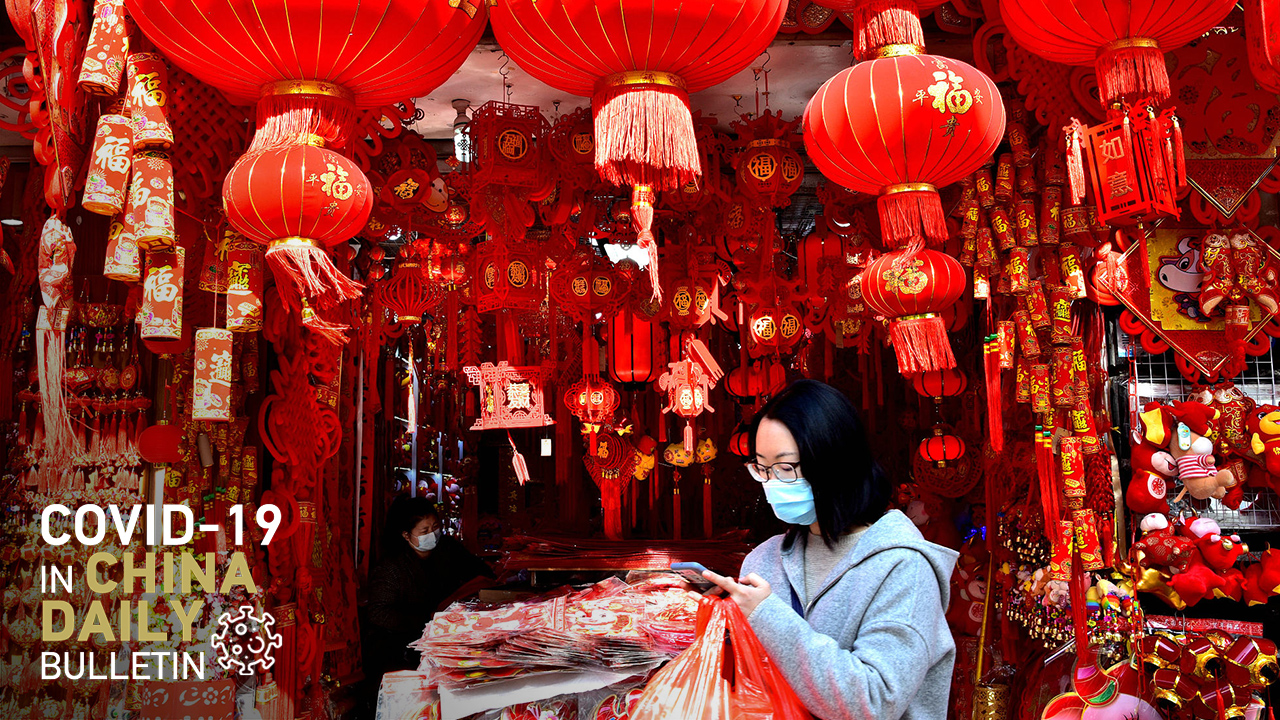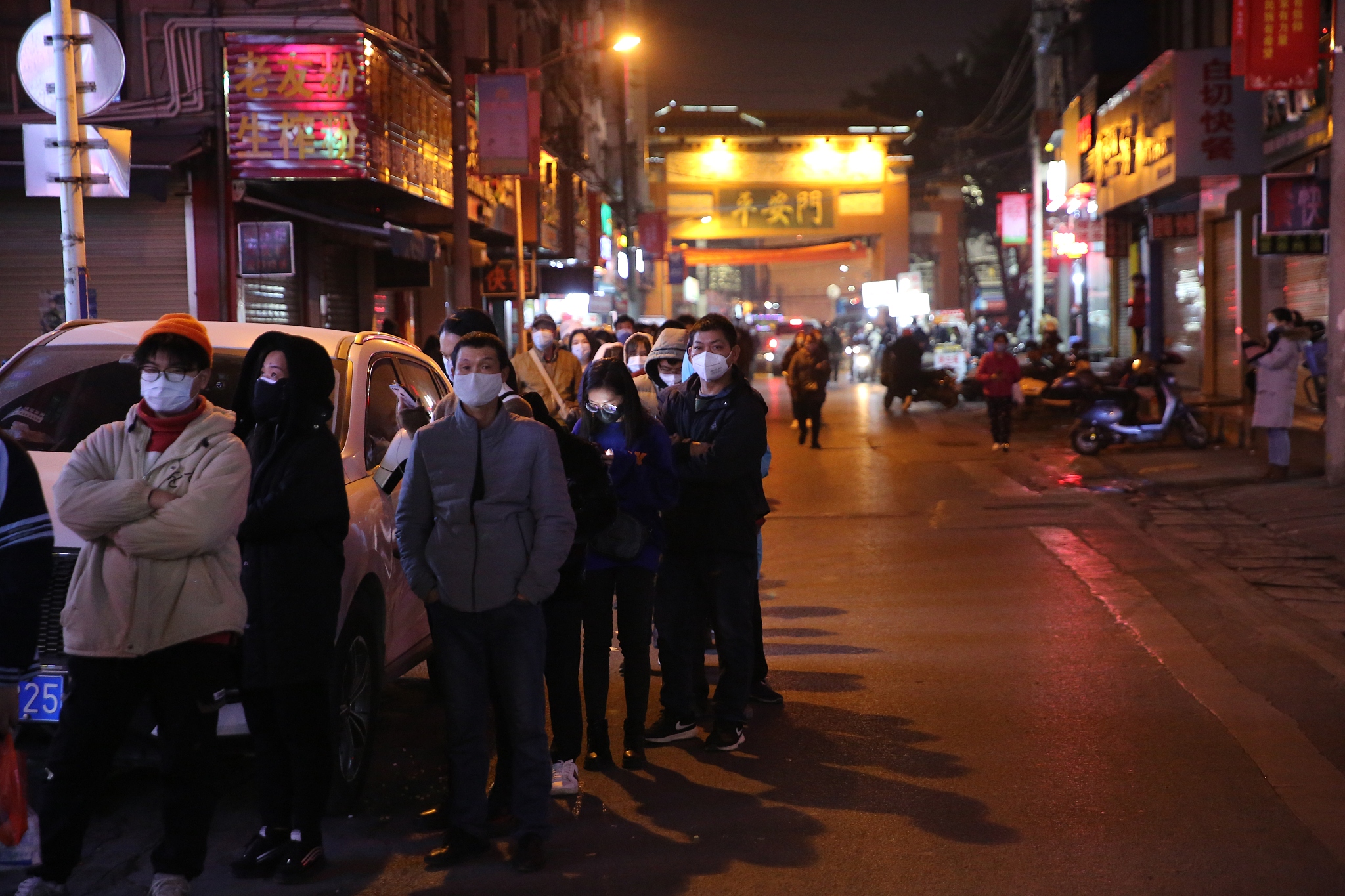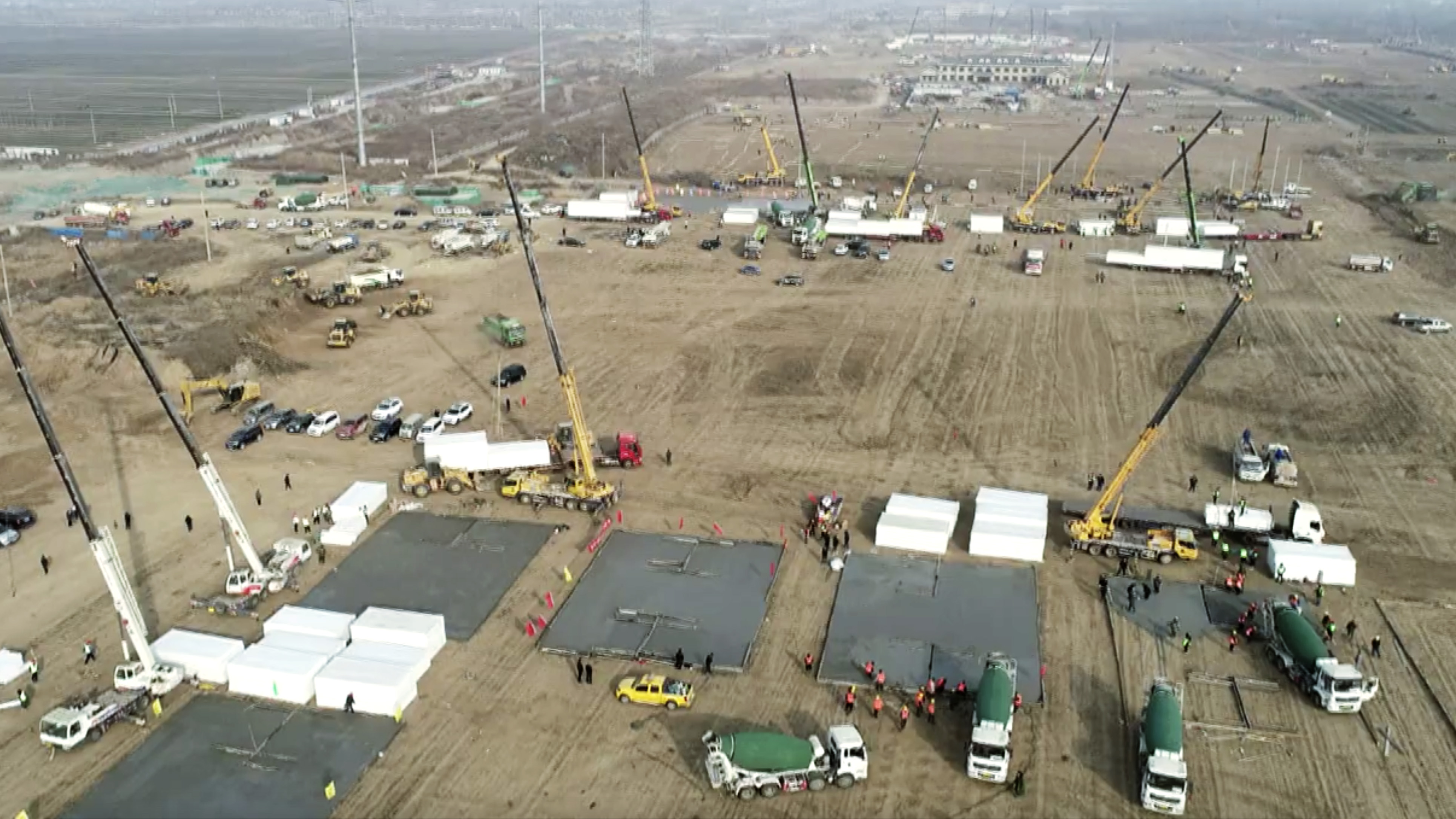
As the Spring Festival, China's traditional Lunar New Year nears, the annual travel rush, a 40-day period known as Chunyun, is around the corner. During this period, a large number of people will return to their hometowns to celebrate the holiday with their families and friends.
However, as the country, especially cities in north China grapples with fresh coronavirus outbreaks, authorities are urging residents not to make "unnecessary" trips to their hometowns for the Lunar New Year holiday to prevent cluster infections in recent months.
At least 24 provinces have issued notices urging people to stay home, avoid travel and family reunions during the Spring Festival, which falls on February 12.
The 24 provincial-level regions that have issued such advisories are Beijing, Tianjin, Shanghai, Hebei, Henan, Shanxi, Shandong, Guizhou, Hubei, Hunan, Sichuan, Chongqing, Zhejiang, Jiangxi, Jiangsu, Fujian, Guangdong, Guangxi, Hainan, Gansu, Shaanxi, Anhui, Ningxia and Jilin.
Large gatherings will be either canceled or regulated
And over ten provinces including Heilongjiang, Jiangxi, Sichuan and Zhejiang, have asked government departments, public institutes, and state-owned companies to cancel large meetings and annual celebrations. Private companies and social organizations have also been asked to restrain from holding large meetings and limiting the number of people attending them. For example, the number in Jiangxi is limited to no more than 50.
Religious places like temples are also suggested not to hold large gatherings like temple fairs, incense offerings, a priestly liturgy, bell striking and other forms of prayers and celebrations.
Read more: 20,000 villagers relocated to quarantine sites in N China
What's happened in Hebei and Heilongjiang

Residents wait in line for nucleic acid testing at Huqiu Village, Nanning City, South China's Guangxi Zhuang Autonomous Region, January 14, 2021. /CFP
Residents wait in line for nucleic acid testing at Huqiu Village, Nanning City, South China's Guangxi Zhuang Autonomous Region, January 14, 2021. /CFP
Aside from restricting organized activities, many places also rolled out measures to control weddings, funerals, family gatherings and parties in hotels and restaurants. In many places, family gatherings and parties are limited to a maximum of 10 people. In contrast, in some places like Guizhou Province, except weddings and funerals, any other forms of gatherings are temporarily banned during the Spring Festival.
Despite government suggestions, as Spring Festival is of great importance in China, many will still travel back to their hometowns, so most local governments have required that people coming back from high-risk and middle-risk regions will all go through a 14-day mandatory quarantine and nucleic acid tests. In some provinces, like Harbin, the capital of Heilongjiang, asked for another seven days of self-isolation after the mandatory quarantine finished.
So far, there are 69 middle-risk areas and two high-risk regions in China, which are Gaocheng District in Shijiazhuang City, Hebei Province and Huiqi Town in Suihua City, Heilongjiang Province. Other cities across China are all low-risk regions.
Though most cities require a negative COVID-19 test result for people from high and middle-risk regions, rules in some cities are much stricter. For example, in Wuhan, people arriving from low-risk areas must get a negative certification within seven days to enter the city. The moves have made many Chinese think twice about their holiday plans.
Experts strongly suggested that seniors over 65 should avoid traveling because once they're infected, it will be tough to recover.
00:52

Because of low temperatures in winter, provinces like Hebei, Heilongjiang and Shenyang have reported local transmission of the novel coronavirus. The situation in Hebei is severe. On January 2, the province, after reporting zero cases for months, detected two new locally transmitted coronavirus cases. The number of cases spiraled to 53 on January 6, 82 on January 10 and 90 on January 12. So far, the province has a total of 555 new confirmed cases.
Large gatherings in Hebei are to blame for the quick spread. According to Hebei authorities, most confirmed cases were detected in rural villages in Gaocheng District, Shijiazhuang City, as they rallied a bunch of times in the past weeks, including religious gatherings and wedding ceremonies.
It's reported that a 44-year-old villager who was confirmed with COVID-19 had attended three weddings in four days. And most of the people didn't wear face masks at the gatherings. In China, rural areas have the tradition of holding large gatherings ahead of the Lunar New Year.
As of Wednesday, more than 20,000 villagers from 12 villages in Gaocheng District had been relocated to centralized quarantine sites to contain the virus spread.

